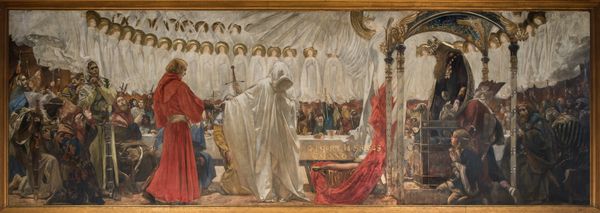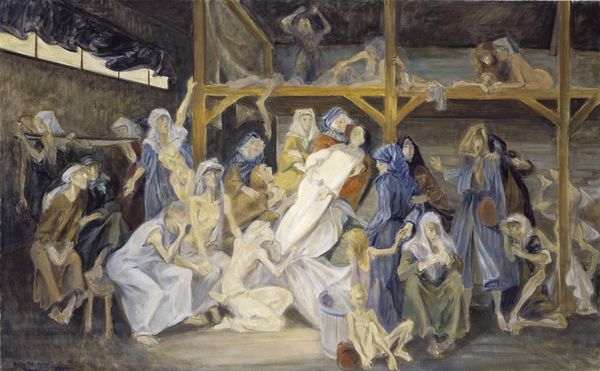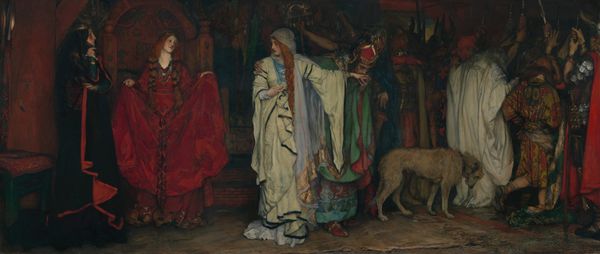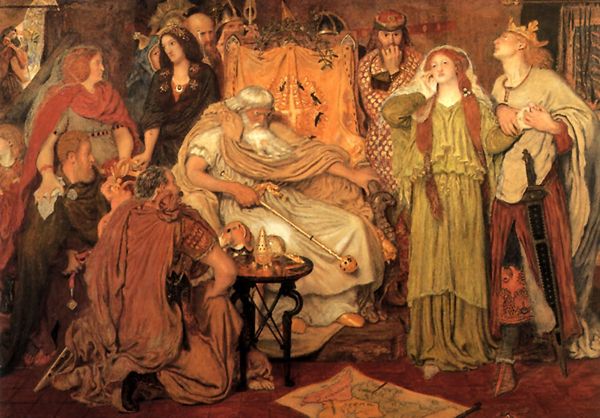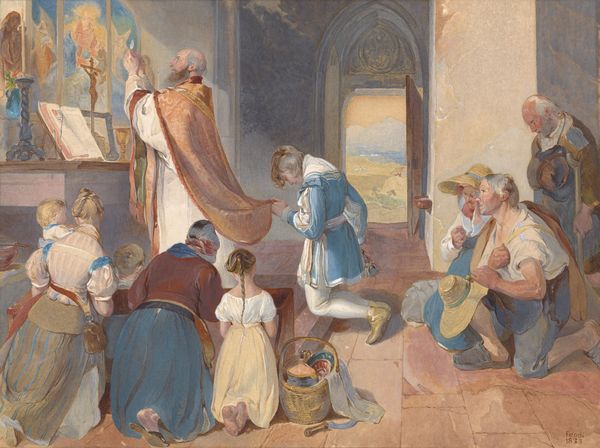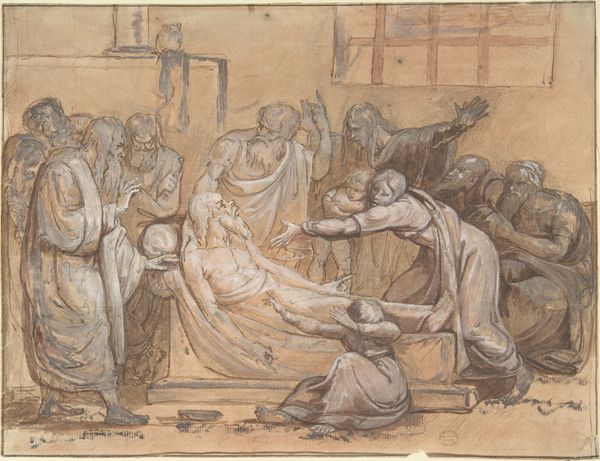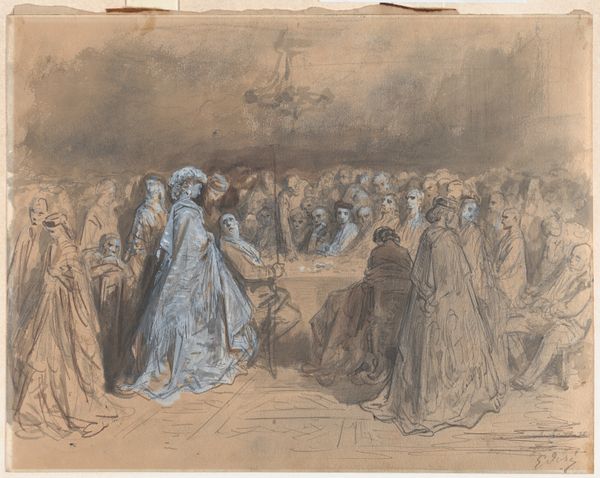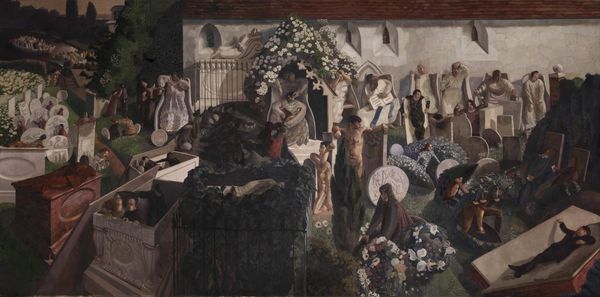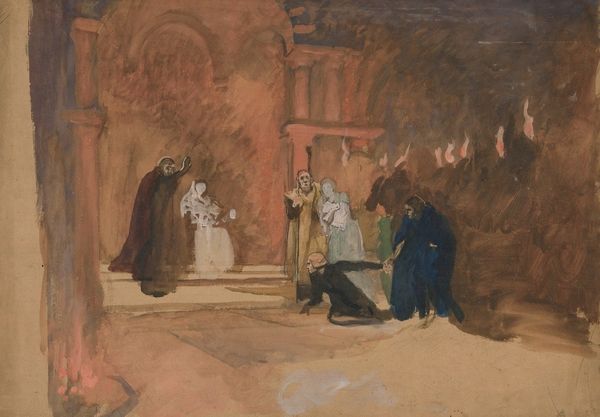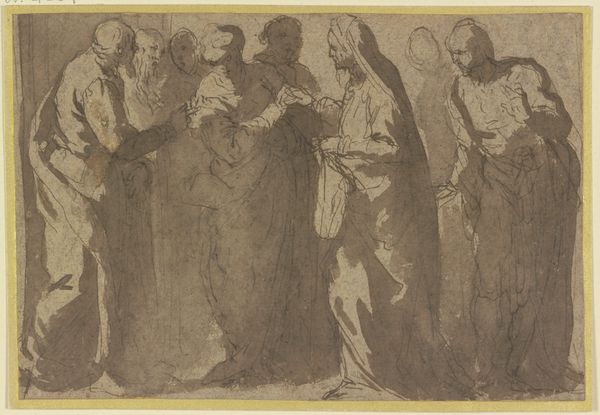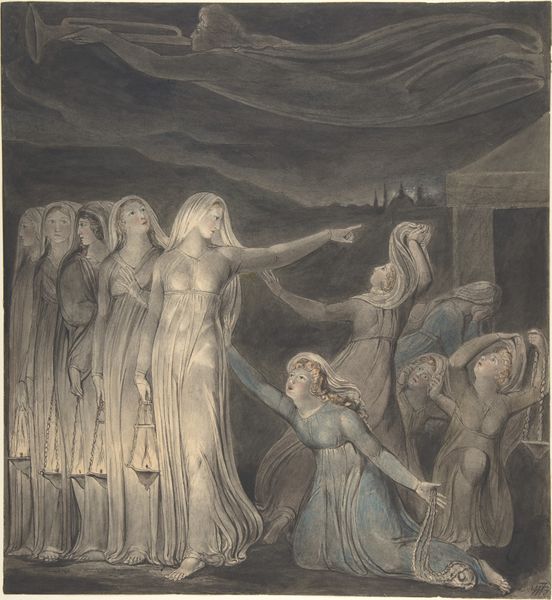
Copyright: Public domain
Editor: Edwin Austin Abbey’s "The Castle of Maidens," created in 1901, uses watercolors to depict what seems to be a solemn procession. There’s a striking use of layered figures, almost a frieze. What do you make of the visual dynamics here? Curator: Immediately, one is struck by the composition. The arrangement of figures across the picture plane, especially their subtle variations in colour and the drapery's treatment, presents a visual rhythm. Observe the way the artist has structured the narrative solely through the disposition and gesture of these figures. Do you note any internal structures or repetitions? Editor: I see how the draped figures create almost a series of repeated shapes and colours. Is the emotional tone driven more by composition than by facial expressions, since many faces are obscured? Curator: Precisely. The veiled faces, while minimizing overt emotional expression, direct us to consider form, light, and shadow. Abbey directs our eyes across the horizontal plane. The variations in hue, predominantly muted tones, contribute significantly to the mood. Editor: So you are suggesting we focus on *how* it's painted more than *what* it represents? The form conveys the feeling. Curator: Exactly. Consider the texture achieved through the watercolour technique itself. Notice the blending and layering. These technical choices amplify the somber atmosphere and elevate the work beyond mere representation. Editor: I never considered watercolor having such power, it always seemed so light. This piece challenges my notions, and the composition truly echoes across each form! Curator: And hopefully, it refines your gaze. Art at its most successful will direct one's attention toward structural devices rather than anecdotal detail.
Comments
No comments
Be the first to comment and join the conversation on the ultimate creative platform.
